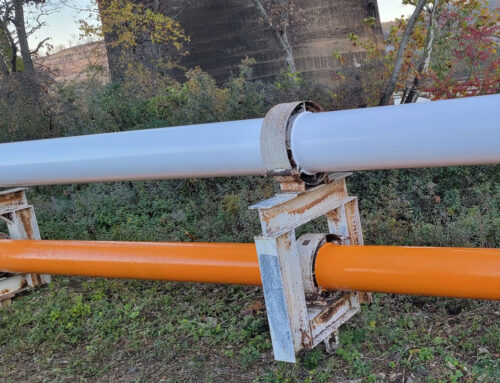Four Bona-Fide Ways That Masking Perfects Results
Overspraying is the enemy of a productive industrial painting job. Paint particles land on control panels, in machinery, across coatings–truly any surface where the industrial painter didn’t expect it to stick.
The subsequent contamination impacts how machinery operates, how coatings adhere, and how the final product looks. That’s not the only hiccup. The necessary cleanup efforts cost the client much-needed time and unforeseen expenses. Overspraying, at times, can negatively impact air quality within an industrial setting, putting workers’ health at risk.
Masking, the practice of placing conformable, temperature-resistant, and chemical-resistant tape or using fluid, protects surfaces during powder coating, wet coating, sandblasting, and galvanizing. Here are the four ways it improves results.
- Masking Preserves Sensitive Mechanical Controls.
Sensors mean the difference between operating and shutdown. For example, chemical plants rely on temperature, pressure, gas, and vapor sensors to regulate chemical reactions and detect hazardous leaks. Oil and gas pipelines utilize a system of sensors to measure flow rate, liquid levels, and gas compositions, all of which give companies real-time inventory, production, and safety data. For sensitive sensor masking, our industrial painters use low-tack, polyester-based precision tapes that are non-conductive. This specialized approach preserves key mechanical controls from paint particles that could otherwise threaten their ability to function. - Masking Safeguards Gaskets.
The small seals that maintain pressure and prevent leaks are the lifeblood of any pipeline, valve, or pump. Despite how important they are, they are also delicate. Any residue, particles, or moisture can disrupt a gasket’s seal, causing the release of gases and liquids. Overspray could easily contaminate a gasketed surface.We trim and fit non-adhesive covers around gasketed surfaces, leveraging precision masking tape. Controlled spraying and brushwork are necessary around any type of seal, followed by careful inspection. - Masking Protects Signage.
Safety signs. Logos. Serial numbers. Labels. Directions. Instructions. Industrial settings include myriad types of signage, most of which are mandated by local, state, and federal governments. Without masking, overspray will cover those key identifying markers and cause a compliance violation. We use masking to fit the contours of signage and protect it from needless paint. - Masking Speeds Up Post-Coating Cleanup.
Perhaps the biggest boon masking presents is its role during the cleanup process. It more or less eliminates the need to remove paint particles from unintended surfaces, a costly and time-consuming process. The covers and film we use produce little to no residue. The result is an aesthetically pleasing, high-performance coating.
Masking Matters Because Details Matter
The Society for Protective Coatings (SSPC) and the National Association of Corrosion Engineers (NACE) do not currently have specific standards or recommendations for masking best practices. However, our NACE-certified industrial painters and corrosion experts have found masking to be as important as any other preparation or cleaning standard.
Eagle Eye Services maintains strict protocols for the performance and aesthetics of our industrial painting projects. Masking is part of our detail-oriented approach. To learn more about our industrial painting and coating services, schedule your consultation today.
Ready to Get Started?
Have questions about your project or need a quote? We’ve got someone ready to help you.



